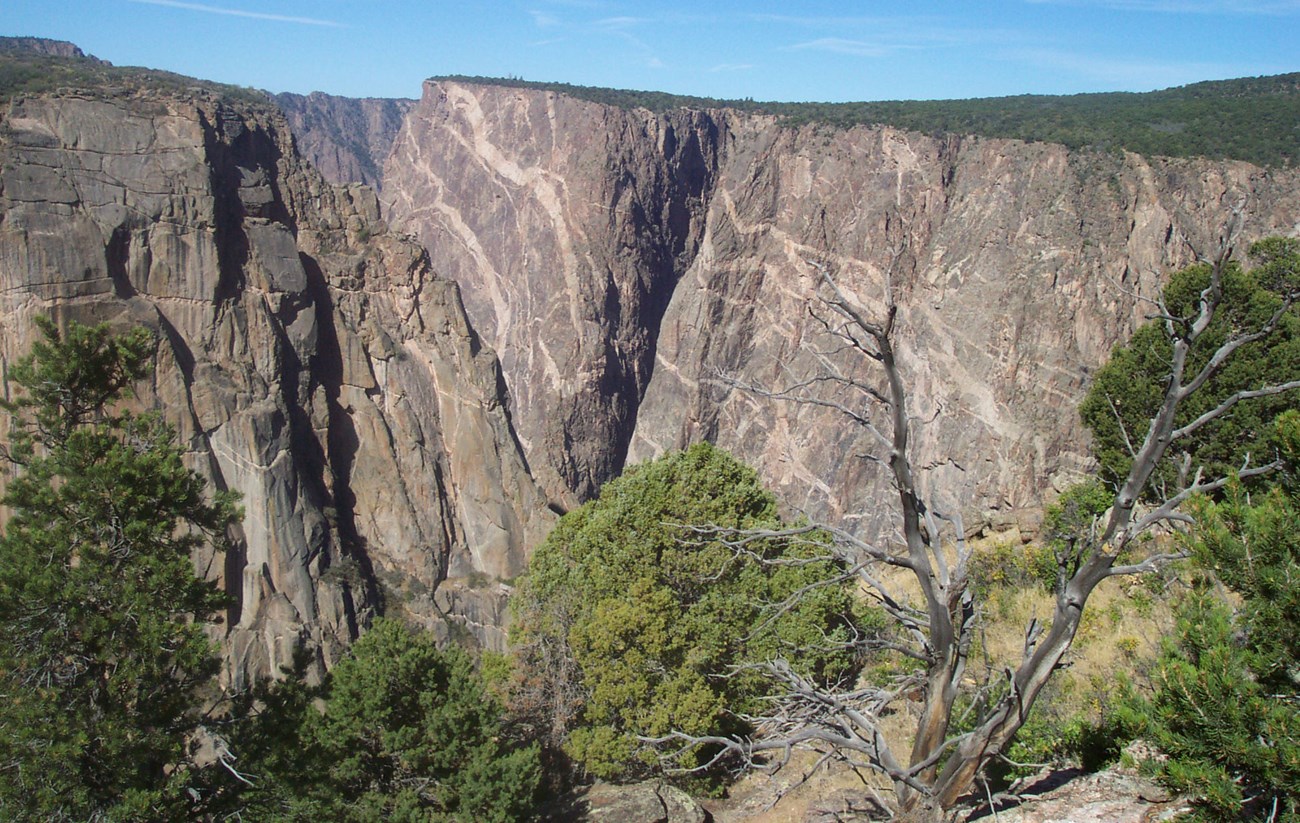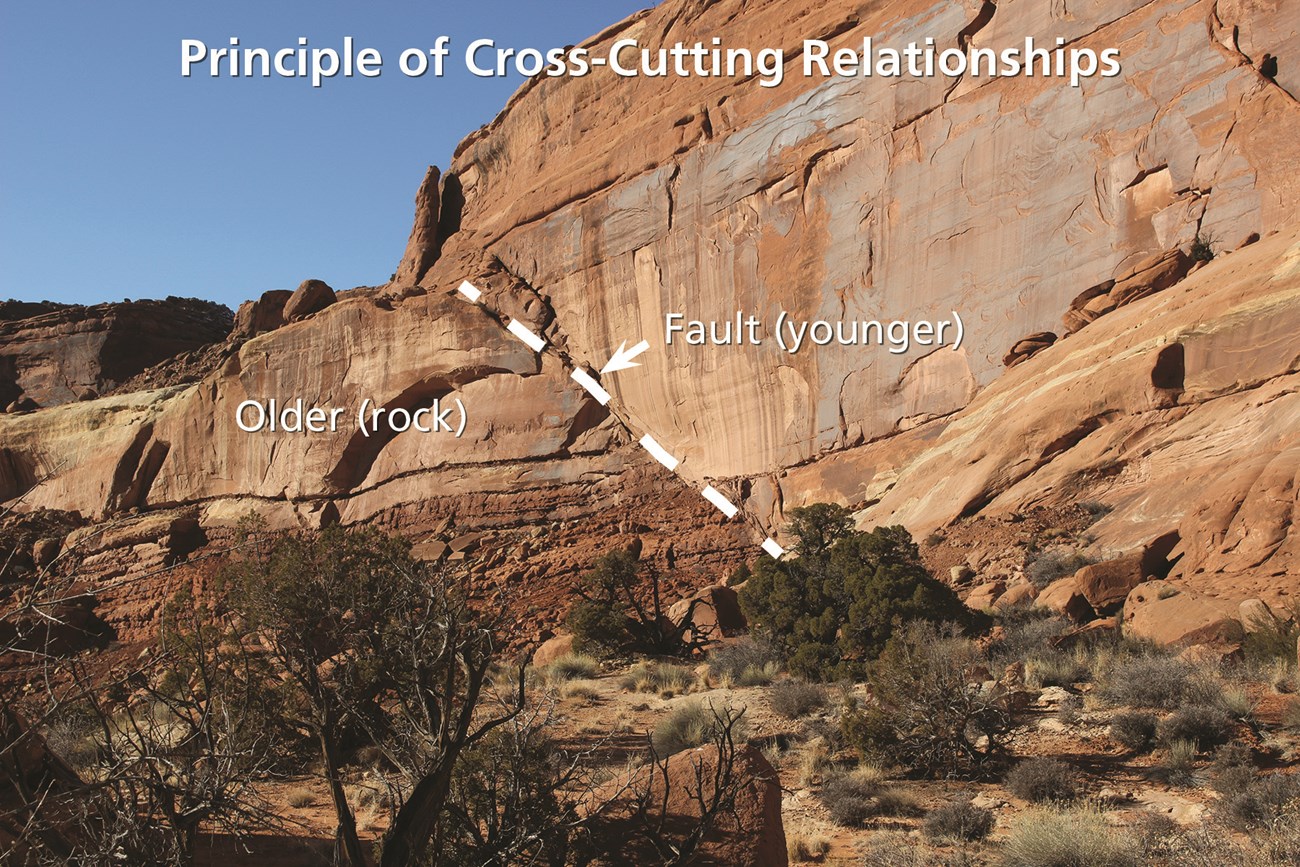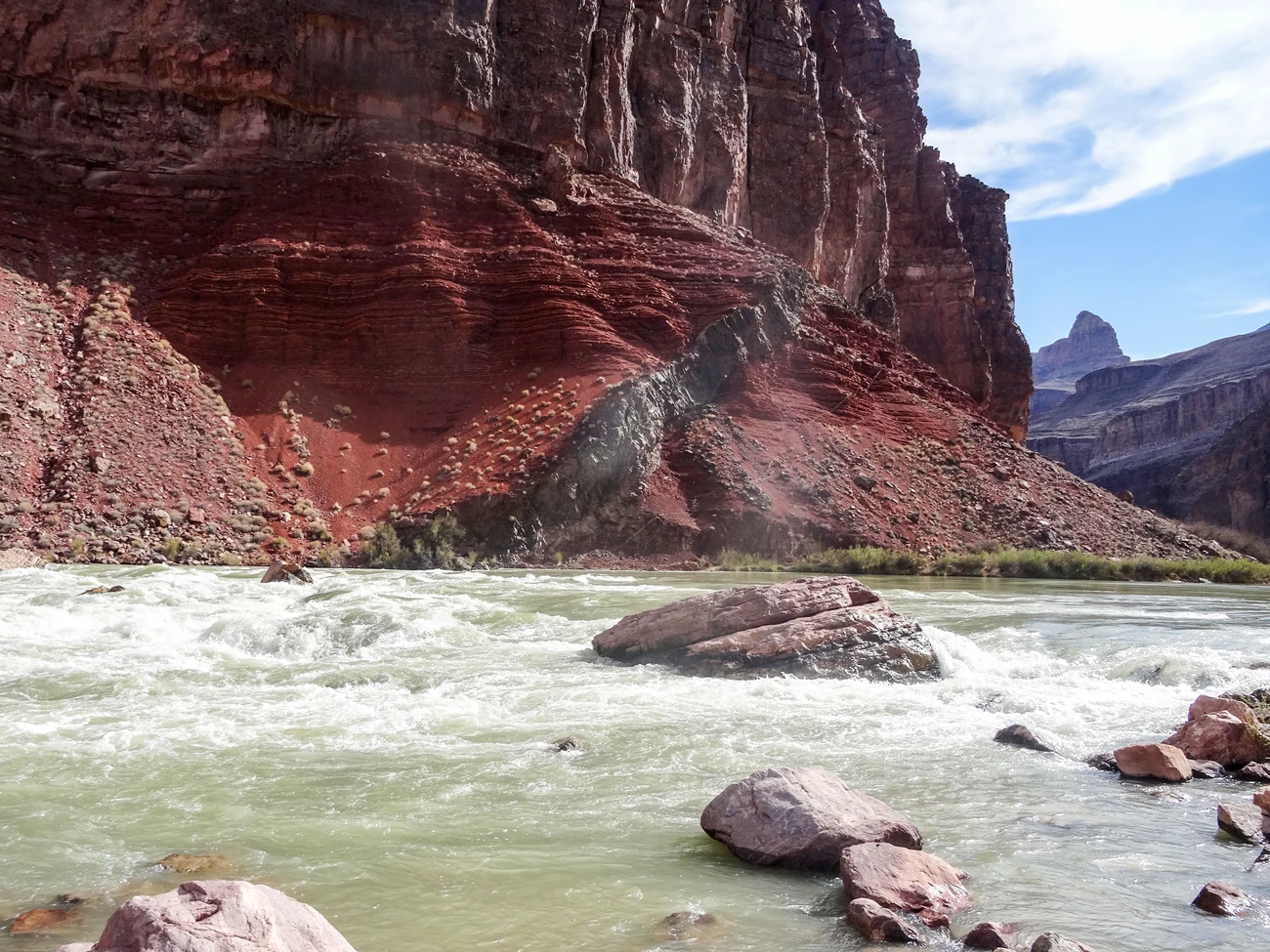Part of a series of articles titled Fundamental Geologic Principles.
Article
Geologic Principles—Cross-cutting Relationships

Pegmatite dikes exposed in Painted Wall cliff face. The light colored dikes are younger than the dark rock. Black Canyon of the Gunnison National Park, Colorado.
Introduction
James Hutton’s observations related to uniformitarianism also serve as the basis for another important geologic principle called cross-cutting relationships, which is a technique used in relative age dating.
Cross-cutting Relationships—Intrusions
In short an intrusive rock body is younger than the rocks it intrudes. For example, Salisbury Crag, a prominent Edinburgh landmark known to Hutton, owes its relief to a thick sheet of resistant basalt. Hutton showed from the super-heated contacts below and above, and from places where the basalt actually invaded underlying and overlying beds, that the thick basalt body was not merely a flow that had formed in sequence. Rather it was intruded as hot magma into the surrounding sedimentary rocks long after they were deposited (Eicher 1976).
Cross-cutting Relationships—Faulting
Other similar relationships include faults being younger than the rock layers they cut and erosional surfaces being younger than the rocks they erode.

Photo by Allyson Mathis, first published in Moab Happenings.


Related Links
Last updated: November 4, 2024
